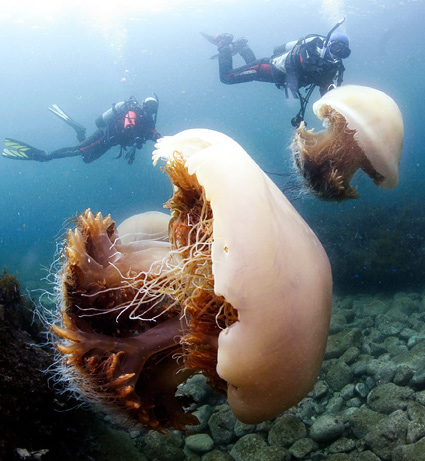
Gigantic jellyfish, weighing up to quarter ton (450 lbs) and reaching up to six feet in diameter, are moving Northward invading Japanese waters and plaguing the local fishing industries. The Nomura jellies (Nemopilema nomurai) are tainting and killing fish in nets and are even to blamed for capsizing a 10-ton vessel after the Nomura jellies loaded the nets. Scientists are looking at global warming effects and polluted water for the increase in jellyfish activity and its expanding habitat. Polluted waters, like those found off the coast of China, boost growth of microscopic plankton that “jellies” feed on and overfishing has eliminated many of the jellyfish’s natural redators and cut down on the competition for plankton. The jellyfish troubles aren’t just showing up in Japanese waters, the creatures are blamed for decimating fishing industries in the Bering and Black seas, forcing the shutdown of seaside power and desalination plants in Japan, the Middle East and Africa, and terrorizing beachgoers worldwide. According to the U.S. National Science Foundation research estimating that people are stung 500,000 times every year — sometimes multiple times — in Chesapeake Bay on the U.S. East Coast, and 20 to 40 die each year in the Philippines from jellyfish stings.
[via Yahoo! News, Photo Credit: National Geographic]



